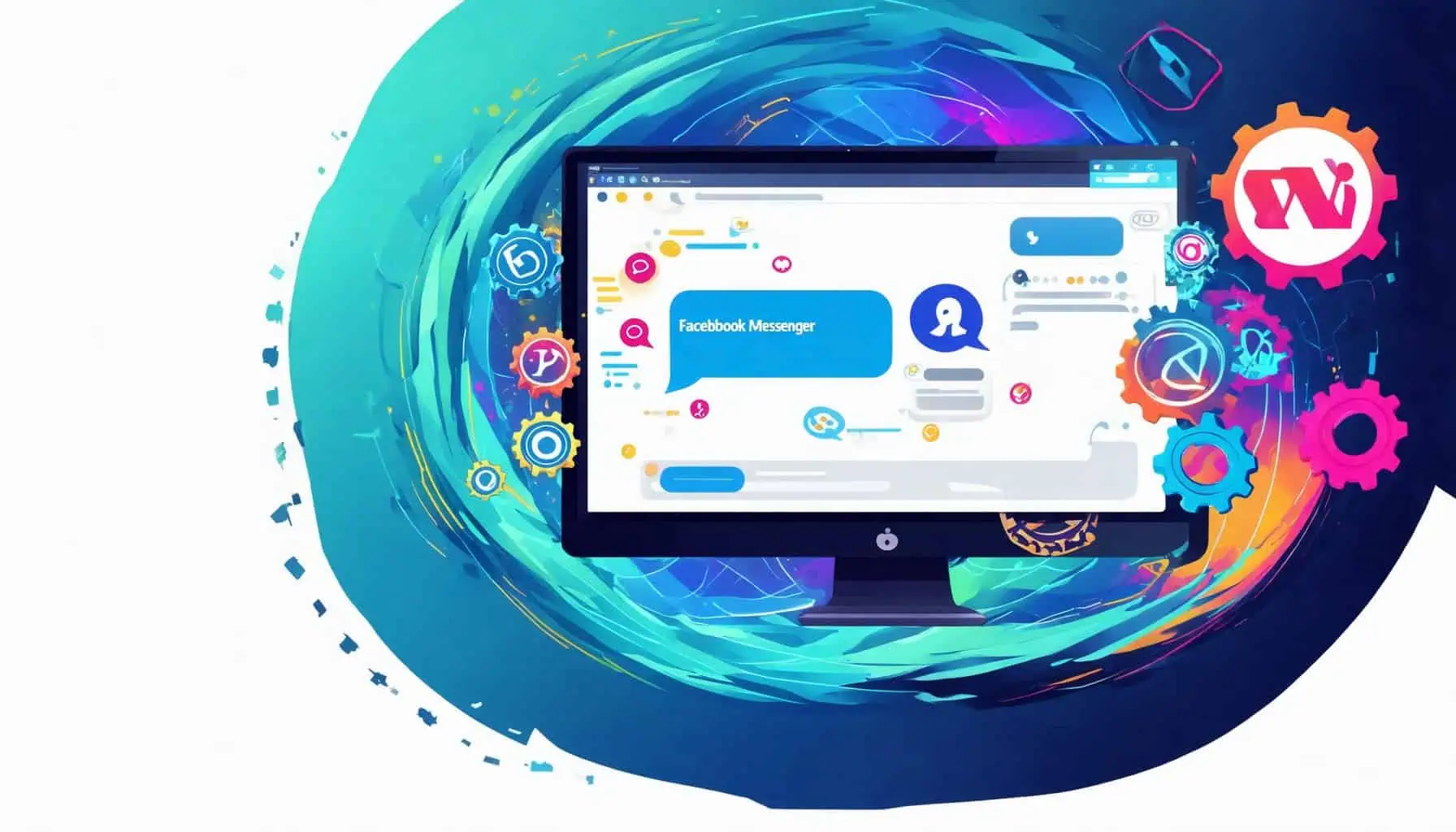Key Takeaways
- Effective onboarding websites streamline the employee integration process, enhancing engagement and retention.
- Incorporating essential features like user-friendly interfaces and interactive content boosts new hire satisfaction.
- The four C’s of onboarding—Compliance, Clarification, Culture, and Connection—are crucial for successful onboarding experiences.
- Real-world examples from brands like Google and Airbnb showcase innovative onboarding strategies that foster a sense of belonging.
- Online onboarding processes offer flexibility, scalability, and cost-effectiveness, making them ideal for modern organizations.
Welcome to our comprehensive guide on onboarding website examples, where we delve into the essential elements that make for effective onboarding experiences. In today’s digital landscape, having a well-designed onboarding page is crucial for engaging users and ensuring they understand your product or service from the get-go. This article will explore what an onboarding website is, the importance of seamless onboarding processes, and key features that successful brands incorporate into their onboarding portals. We will also analyze real-world employee onboarding website examples and mobile app onboarding strategies that enhance user retention. Additionally, we will discuss the four C’s of onboarding—Compliance, Clarification, Culture, and Connection—and how they can be effectively illustrated through various onboarding flow examples. By the end of this article, you will have a clear understanding of how to design an impactful onboarding experience that not only welcomes users but also sets them up for success.
Understanding the Importance of Onboarding Websites
An onboarding website, also known as an onboarding portal or employee portal, is a dedicated online platform designed to streamline the onboarding process for new employees. This digital space serves multiple functions, enhancing the overall experience and efficiency of integrating new hires into an organization. Key features of an onboarding website include:
- Company Orientation: New employees can access essential information about the company’s mission, values, culture, and organizational structure, helping them understand their role within the larger context.
- Benefits Enrollment: The portal allows employees to review and enroll in various benefits programs, such as health insurance, retirement plans, and other perks, ensuring they make informed decisions.
- Training Modules: Onboarding websites often host training resources, including videos, documents, and interactive modules that facilitate skill development and compliance training.
- Digital Paperwork: New hires can complete and submit necessary documentation, such as tax forms and employment agreements, electronically, reducing paperwork and administrative burden.
- Communication Tools: Many onboarding portals integrate communication features, enabling new employees to connect with HR representatives, mentors, or colleagues, fostering a sense of community from day one.
- Feedback Mechanisms: Some platforms include tools for new hires to provide feedback on their onboarding experience, allowing organizations to continuously improve the process.
According to a study by the Society for Human Resource Management (SHRM), effective onboarding can improve employee retention by 82% and productivity by over 70%. Implementing a comprehensive onboarding website not only enhances the new hire experience but also contributes to long-term organizational success (SHRM, 2021).
Incorporating tools like Messenger Bot can further enhance the onboarding experience by providing instant support and answering common questions new employees may have, ensuring they feel supported throughout their transition.
Key Features of Effective Onboarding Websites
Effective onboarding websites are characterized by several key features that enhance user experience and engagement. These features not only facilitate a smoother onboarding process but also contribute to higher employee satisfaction and retention rates. Here are some essential elements:
- User-Friendly Interface: A clean, intuitive design ensures that new hires can navigate the onboarding website easily, reducing frustration and enhancing engagement.
- Personalization: Tailoring the onboarding experience to individual roles and departments helps new employees feel valued and understood from the outset.
- Interactive Content: Incorporating videos, quizzes, and gamified elements keeps new hires engaged and makes learning more enjoyable.
- Progress Tracking: Allowing employees to track their onboarding progress encourages accountability and helps them stay on schedule.
- Integration with Other Tools: Seamless integration with HR systems and communication platforms, like Brain Pod AI, enhances the overall onboarding experience by providing comprehensive support.
By focusing on these key features, organizations can create effective onboarding websites that not only meet the needs of new employees but also align with broader business objectives.
Onboarding Website Examples from Successful Brands
Examining onboarding website examples from successful brands can provide valuable insights into best practices and innovative approaches. Here are a few notable examples:
- Slack: Known for its user-friendly onboarding portal, Slack offers a comprehensive guide to help new users navigate the platform effectively, complete with interactive tutorials and helpful resources.
- Airbnb: Their onboarding website emphasizes company culture and values, providing new hires with a deep understanding of the brand’s mission and community impact.
- Google: Google’s onboarding process includes a robust online portal that integrates training modules, benefits enrollment, and direct communication with HR, ensuring a seamless transition for new employees.
These onboarding website examples demonstrate how effective design and strategic content can significantly enhance the onboarding experience, ultimately leading to improved employee retention and satisfaction.

Understanding the Importance of Onboarding Websites
Onboarding websites play a crucial role in ensuring a seamless transition for new employees into an organization. They serve as a centralized hub where new hires can access vital information, resources, and tools necessary for their success. By implementing effective onboarding website examples, companies can enhance employee engagement, reduce turnover rates, and foster a positive workplace culture. A well-designed onboarding page not only streamlines the onboarding process but also reinforces the company’s values and mission from the very beginning.
Key Features of Effective Onboarding Websites
An effective onboarding page should include the following key sections to ensure a smooth transition for new employees:
- Welcome Message: A warm introduction that conveys the company’s mission and values, helping new hires feel valued and connected from day one.
- Benefits Overview: Detailed information about employee benefits, including health insurance, retirement plans, and wellness programs. This section should highlight how these benefits support work-life balance and employee well-being.
- Enrollment Information: Clear instructions on how to enroll in benefits, including deadlines and necessary documentation. Providing links to relevant forms or portals can enhance user experience.
- Technology Setup: Step-by-step guides for downloading necessary software and accessing IT resources. Include links to IT support and troubleshooting resources to assist new hires in setting up their workstations.
- Key Contacts: A list of important email addresses and phone numbers, including HR contacts, IT support, and team leads. This ensures new employees know where to turn for assistance.
- Company Culture Guide: Insights into the company culture, including core values, diversity and inclusion initiatives, and social responsibility efforts. This can help new hires align with the company’s ethos.
- Onboarding Schedule: A detailed timeline for the first day, week, and month, outlining training sessions, meetings, and key milestones. This helps new employees manage their time effectively and set expectations.
- Resources and Tools: Links to essential resources, such as the employee handbook, training materials, and company policies. This section can also include access to collaboration tools and platforms used within the organization.
- Feedback Mechanism: An option for new hires to provide feedback on their onboarding experience. This can help improve the process for future employees and foster a culture of open communication.
By incorporating these elements, your onboarding page can enhance the new hire experience, promote engagement, and facilitate a smoother transition into the company. For further insights on effective onboarding practices, refer to resources from the Society for Human Resource Management (SHRM) and the Harvard Business Review.
Onboarding Website Examples from Successful Brands
Many successful brands have implemented innovative onboarding website examples that effectively engage new employees. Companies like Zappos and Google have created onboarding portals that not only provide essential information but also reflect their unique company cultures. These onboarding website examples showcase how a well-structured onboarding process can lead to higher employee satisfaction and retention rates.
For a deeper dive into how to transform your onboarding experience, check out our article on Transforming Employee Onboarding.
What is Onboarding with an Example?
Onboarding is a critical process that involves integrating new employees into an organization, ensuring they are well-prepared to contribute effectively. This process typically encompasses several key components:
- Orientation: This initial phase introduces new hires to the company’s structure, culture, vision, mission, and values. It often includes presentations from leadership and HR, providing a comprehensive overview of the organization.
- Training Programs: Effective onboarding includes tailored training sessions that equip new employees with the necessary skills and knowledge specific to their roles. This may involve job shadowing, e-learning modules, and hands-on training.
- Mentorship and Support: Assigning a mentor or buddy can significantly enhance the onboarding experience. This person serves as a resource for questions and guidance, helping new hires acclimate to their environment.
- Feedback Mechanisms: Regular check-ins and feedback sessions are essential for understanding the new employee’s experience and addressing any concerns. This can help improve retention rates and job satisfaction.
- Integration into Company Culture: Activities that promote social interaction, such as team-building exercises or informal gatherings, can help new hires feel more connected to their colleagues and the organization.
For example, a tech company might implement a structured onboarding program that includes a week-long orientation, followed by a series of training sessions on company software, paired with a mentor from the same department. This comprehensive approach not only helps new employees understand their roles but also fosters a sense of belonging within the company.
According to the Society for Human Resource Management (SHRM), effective onboarding can improve employee retention by 82% and productivity by over 70% (SHRM, 2021). By investing in a robust onboarding process, organizations can enhance employee engagement and long-term success.
Analyzing Successful Employee Onboarding Website Examples
When exploring employee onboarding website examples, several brands stand out for their effective strategies. These examples illustrate how a well-designed onboarding page can streamline the onboarding process and enhance user experience:
- Google: Their onboarding portal is user-friendly, featuring interactive elements that guide new hires through the onboarding process. This includes videos, checklists, and resources that help employees acclimate quickly.
- Slack: Slack’s onboarding website emphasizes community and culture, providing new hires with insights into team dynamics and company values. Their approach fosters a sense of belonging right from the start.
- Airbnb: The onboarding experience at Airbnb is designed to be immersive, with a focus on storytelling that connects new employees to the brand’s mission and values. This helps new hires feel invested in their roles from day one.
These onboarding website examples showcase how effective design and content strategies can significantly impact new employee integration and retention.
Mobile App Onboarding Examples That Enhance User Retention
In the realm of mobile applications, onboarding is equally crucial. Effective mobile app onboarding examples demonstrate how to engage users from the outset, ensuring they understand the app’s features and benefits:
- Duolingo: The language-learning app uses gamification in its onboarding process, making it fun and engaging. Users are guided through interactive lessons that showcase the app’s capabilities while keeping them motivated.
- Headspace: This meditation app provides a personalized onboarding experience by asking users about their goals and preferences. This tailored approach helps users feel more connected and invested in their journey.
- Spotify: Spotify’s onboarding process highlights its extensive music library and personalized playlists. By allowing users to select their favorite genres, the app enhances user engagement and retention.
These mobile app onboarding examples illustrate the importance of a thoughtful onboarding process in enhancing user retention and satisfaction, ultimately leading to long-term success.
Exploring the Four C’s of Onboarding: Compliance, Clarification, Culture, and Connection
Understanding the four C’s of onboarding is essential for creating an effective onboarding website. These components—Compliance, Clarification, Culture, and Connection—serve as the foundation for integrating new employees into an organization. By addressing these areas, businesses can enhance their onboarding processes and improve employee retention.
Best Onboarding Experiences Examples in Different Industries
When examining onboarding website examples, it’s crucial to look at how different industries implement the four C’s effectively. For instance, tech companies often excel in employee onboarding website examples that prioritize compliance through interactive training modules. These modules ensure that new hires understand legal requirements and company policies from day one.
In the healthcare sector, onboarding portals emphasize clarification by providing detailed job descriptions and performance expectations. This clarity helps new employees understand their roles and how they contribute to patient care. Additionally, organizations in the retail industry often focus on culture by showcasing their values and mission through engaging multimedia content on their onboarding pages. This approach fosters a sense of belonging and alignment with the company’s goals.
Onboarding Flow Examples That Illustrate the Four C’s
Effective onboarding flows illustrate how the four C’s can be integrated into a seamless experience. For example, a well-designed onboarding portal might start with compliance training, followed by clarification sessions where new hires can ask questions about their roles. Next, the onboarding flow can introduce the company culture through videos and testimonials from current employees, highlighting shared values and social norms.
Finally, fostering connection can be achieved through virtual meet-and-greets or mentorship programs, which can be facilitated by tools like Messenger Bot. By incorporating these elements into the onboarding process, organizations can create a comprehensive onboarding experience that not only informs but also engages new hires, ultimately leading to higher retention rates and job satisfaction.

What is an Onboarding Portal?
An onboarding portal is a sophisticated digital platform designed to streamline the onboarding process for new employees within an organization. It acts as a centralized hub where new hires can access essential information, resources, and tasks necessary for their integration into the company culture and workflow.
Key Features of Effective Onboarding Portal Examples
- Centralized Information Access: The portal provides new employees with easy access to company policies, employee handbooks, and organizational charts, ensuring they have all the necessary information at their fingertips.
- Task Management: It allows HR departments to assign and track onboarding tasks, such as completing tax forms, setting up benefits, and scheduling training sessions, which helps in keeping the onboarding process organized and efficient.
- Interactive Learning Modules: Many onboarding portals include interactive training modules that help new hires understand their roles and responsibilities, as well as the tools and technologies they will be using.
- Social Integration: Some portals feature social components, enabling new employees to connect with colleagues, join teams, and participate in community forums, fostering a sense of belonging from day one.
- Feedback Mechanisms: Effective onboarding portals often incorporate feedback tools that allow new hires to share their experiences and suggestions, helping organizations continuously improve their onboarding processes.
- Compliance and Documentation: The portal ensures that all necessary compliance training and documentation are completed, which is crucial for regulatory adherence and risk management.
Free Onboarding Website Examples for Small Businesses
For small businesses looking to implement effective onboarding processes, several free onboarding website examples can serve as inspiration. Platforms like Brain Pod AI offer tools that can enhance the onboarding experience through AI-driven chat assistants, providing real-time support and guidance for new hires. Additionally, exploring various employee onboarding website examples can provide insights into best practices and innovative strategies that can be adapted to fit smaller organizational needs.
Can Onboarding Be Done Online?
Yes, onboarding can be effectively conducted online, and it is becoming increasingly popular among organizations. Here are several key reasons why online onboarding is the future of employee integration:
- Centralized Information Access: Online onboarding platforms allow companies to consolidate essential information in one accessible location. A study by McKinsey highlights that employees spend approximately 19% of their workday searching for information necessary for their roles. By utilizing an online system, new hires can quickly access company policies, protocols, and resources, streamlining their transition into the organization.
- Enhanced Engagement: Digital onboarding can incorporate interactive elements such as videos, quizzes, and gamified learning experiences, which can significantly boost engagement levels. According to research from the Brandon Hall Group, organizations that implement effective onboarding programs improve new hire retention by 82% and productivity by over 70%.
- Flexibility and Convenience: Online onboarding provides flexibility for both the employer and the employee. New hires can complete training modules at their own pace, accommodating different learning styles and schedules. This is particularly beneficial for remote employees or those in different time zones.
- Cost-Effectiveness: Transitioning to an online onboarding process can reduce costs associated with in-person training sessions, such as venue rentals, printed materials, and travel expenses. A report from the Society for Human Resource Management (SHRM) indicates that companies can save up to 50% on onboarding costs by utilizing digital platforms.
- Data Tracking and Analytics: Online onboarding systems often come equipped with analytics tools that allow HR teams to track progress and engagement metrics. This data can be invaluable for refining the onboarding process and ensuring that new hires are meeting key milestones. According to a study by the Harvard Business Review, organizations that leverage data analytics in onboarding see a significant improvement in employee performance and satisfaction.
In conclusion, online onboarding not only enhances the efficiency of the onboarding process but also improves employee engagement and retention. As companies continue to adapt to remote work environments, the shift towards digital onboarding solutions is likely to accelerate, making it a vital component of modern HR practices.
Advantages of Online Onboarding Processes
Online onboarding processes offer a multitude of advantages that can significantly enhance the employee experience. Here are some key benefits:
- Scalability: Online onboarding can easily scale to accommodate a growing workforce, ensuring that all new hires receive consistent training and information regardless of their location.
- Accessibility: Employees can access onboarding materials anytime and anywhere, making it easier for them to review content as needed and revisit training modules.
- Integration with Other Tools: Many online onboarding platforms can integrate with existing HR systems, allowing for seamless data transfer and management.
- Improved Communication: Online onboarding can facilitate better communication between new hires and their teams through integrated messaging tools, fostering a sense of connection from day one.
Website Onboarding Strategies for Remote Teams
Implementing effective website onboarding strategies for remote teams is crucial for ensuring a smooth transition for new hires. Here are some strategies to consider:
- Personalized Onboarding Paths: Tailor the onboarding experience to meet the specific needs of different roles within the organization, ensuring that each new hire receives relevant information.
- Interactive Learning Modules: Utilize interactive content such as quizzes and simulations to engage new hires and reinforce learning.
- Regular Check-Ins: Schedule regular virtual check-ins to provide support and address any questions or concerns new hires may have during their onboarding journey.
- Feedback Mechanisms: Implement feedback tools to gather insights from new hires about their onboarding experience, allowing for continuous improvement of the process.
What are the four C’s of onboarding examples?
The four C’s of onboarding—Compliance, Clarification, Culture, and Connection—are essential components that ensure a smooth transition for new employees into an organization. Each element plays a critical role in enhancing the onboarding experience and fostering employee engagement from day one.
Best Onboarding Experiences Examples in Different Industries
When examining the best onboarding experiences across various industries, companies like Brain Pod AI and tech giants such as Google and Facebook stand out. These organizations have effectively integrated the four C’s into their onboarding processes:
- Compliance: New hires are provided with necessary legal and regulatory information, ensuring they understand company policies and procedures.
- Clarification: Clear job expectations and responsibilities are communicated, helping employees understand their roles within the organization.
- Culture: Companies like Google immerse new employees in their unique corporate culture, promoting values and mission from the outset.
- Connection: Effective onboarding fosters relationships between new hires and existing team members, enhancing collaboration and support.
Onboarding Flow Examples That Illustrate the Four C’s
To illustrate the four C’s in action, consider the onboarding flow of a successful e-commerce platform. Their onboarding process includes:
- Compliance: A digital checklist that guides new employees through mandatory training modules on compliance and safety.
- Clarification: Interactive sessions with managers to discuss specific job roles and performance metrics.
- Culture: Virtual team-building activities that introduce new hires to the company’s values and social environment.
- Connection: A mentorship program pairing new employees with seasoned staff to foster relationships and provide ongoing support.
These onboarding flow examples not only enhance the employee experience but also contribute to higher retention rates and overall job satisfaction.





